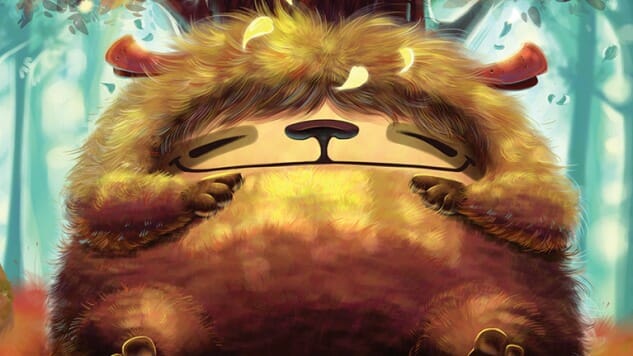Smile Is a Cute Board Game, But It Depends Too Much on Luck
Art courtesy of Z-Man Games
Smile is the newest title from prolific designer Michael Schacht, who has several other titles coming out this year (including the promising Spirits of the Forest) and who is best known for his 2007 title Zooloretto, which won the Spiel des Jahres award and has spawned a number of spinoffs. Smile, from Asmodee imprint Z-Man, is another animal-themed game, with fantastic artwork and a light press-your-luck card-drafting mechanic that makes for quick play and some stressful decisions, even though much of what happens here is beyond your control.
Smile is somewhat similar to the 2004 game No Thanks! with better art and a couple of tweaks to the mechanics. In Smile, the deck comprises ten cards per player—so 30 to 50 cards, as the game plays three to five—and one game comprises ten rounds. In each round, one card per player is revealed to the table, and players then must decide whether to ‘offer’ by placing one of their firefly tokens (which each player keeps hidden in his/her hand) on the lowest-valued card or to ‘capture’ any card with fireflies on it. Thus over the course of a game, each player will acquire ten cards. Each card has a value on it from -5 points to +6 points, and the sum of those values is the main determinant of your final score.
However, it’s a bit more involved than just taking the best card available each round, as some cards will be worth more or less to you than to other players. Most cards in the deck have one of four colors in the upper left, and if you acquire a card with a color that matches a card you already have, they immediately cancel each other out, and you must discard the pair. That can be good—if you have a -5 card but can acquire a card with a matching color, you get to toss that particular killer card—or bad, if you have a great card and then have to avoid acquiring a card that will force you to discard the great one.
-

-

-

-

-

-

-

-

-

-

-

-

-

-

-

-

-

-

-

-

-

-

-

-

-

-

-

-

-

-

-

-

-

-

-

-

-

-

-

-









































